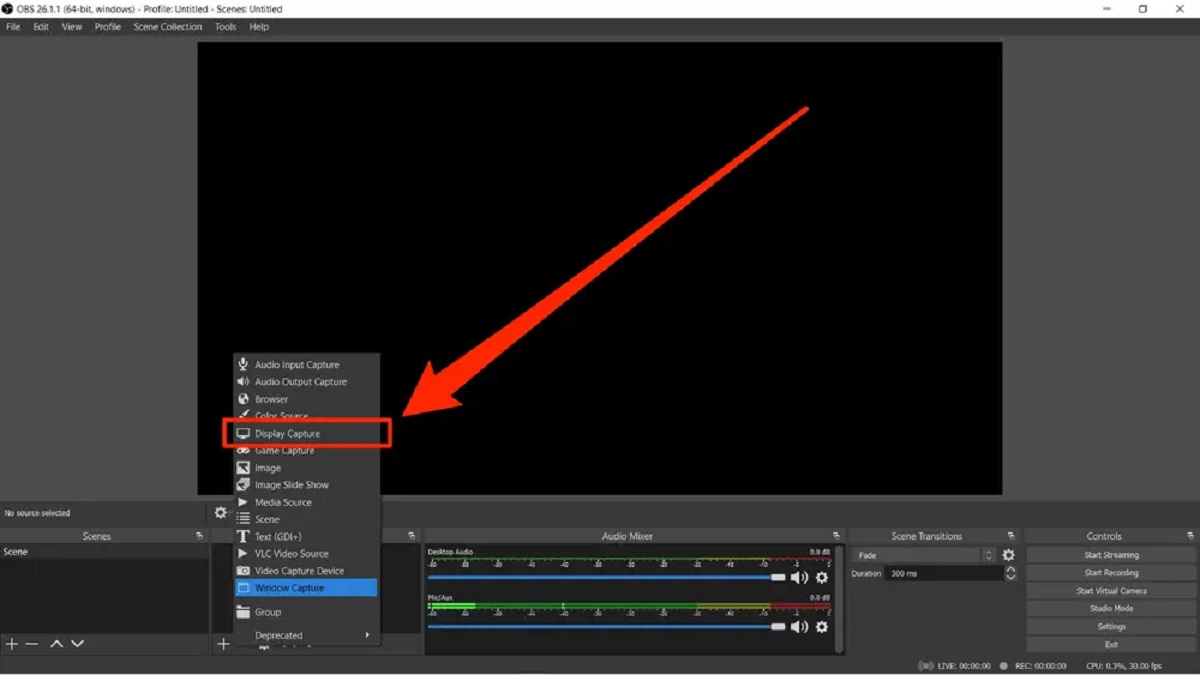Why Download R Studio?
Are you interested in statistical analysis, data visualization, and data science? Look no further than R Studio, a powerful integrated development environment (IDE) for the programming language R. It provides an intuitive and user-friendly interface that makes data analysis and visualization more accessible to both beginners and experienced analysts.
So why should you download R Studio? Here are a few compelling reasons:
- Comprehensive Data Analysis: R Studio offers a wide range of statistical techniques and packages that allow you to explore, analyze, and manipulate data effectively. Whether you’re performing basic calculations or complex statistical modeling, R Studio provides the tools and libraries necessary to handle datasets of various sizes.
- Data Visualization: Visualizing data is crucial for gaining insights and effectively communicating the results. R Studio provides powerful visualization libraries, such as ggplot2, that enable you to create beautiful and interactive graphs, charts, and plots. With customizable options and a vast collection of visualization techniques, you can present your data in a visually appealing and informative manner.
- Collaborative Environment: R Studio allows for easy collaboration on projects. You can share your code, analyses, and visualizations with colleagues or the wider data science community. The ability to collaborate fosters knowledge sharing, code reuse, and peer review, enhancing the efficiency and quality of your work.
- Extensibility: R Studio is highly extensible, with an extensive library of packages available for any specific data analysis needs. These packages provide additional functionality and allow you to expand the capabilities of R Studio. You can easily install and use packages tailored to your area of interest, ensuring that you have the right tools at your disposal.
- Rich Community and Resources: R Studio benefits from a vibrant and supportive community of data scientists, statisticians, and developers. Whether you’re a beginner seeking guidance or an advanced user looking to share your knowledge, the R Studio community is a valuable resource. Online forums, tutorials, blogs, and documentation are readily available, providing answers to your questions and helping you overcome challenges.
By downloading R Studio, you gain access to a versatile and powerful IDE that empowers you to perform advanced data analysis, visualization, and modeling. Whether you’re a student, researcher, or professional, R Studio offers the tools and resources necessary to explore and understand your data. So why wait? Download R Studio today and unlock the potential of your data analysis endeavors.
Step-by-Step Guide to Download R Studio
Downloading R Studio is a straightforward process that can be completed in just a few simple steps. Whether you’re using Windows, macOS, or Linux, follow this step-by-step guide to get R Studio up and running on your computer:
- Visit the R Studio website: Start by going to the official R Studio website at https://www.rstudio.com/.
- Choose the appropriate version: On the R Studio homepage, you’ll find different versions of R Studio available for different operating systems. Select the version that matches your operating system (Windows, macOS, or Linux).
- Download R Studio: Once you’ve chosen the correct version, click on the download link to initiate the download process. The file size is relatively small, so it shouldn’t take long to complete the download.
- Run the installation file: Locate the downloaded R Studio installer file on your computer and double-click on it to run the installation wizard.
- Follow the installation wizard: The installation wizard will guide you through the installation process. Follow the on-screen instructions and choose the desired installation options. You can usually leave the default settings unless you have specific preferences.
- Complete the installation: Once the installation is complete, you will see a confirmation message. You can now launch R Studio and start using it for your data analysis and visualization needs.
- Optional: Install additional packages: R Studio comes with a range of default packages, but you may want to install additional packages based on your specific requirements. You can install packages directly from the R Studio interface by using the “install.packages()” function.
- Stay updated: It’s important to keep your R Studio installation up to date to take advantage of new features, bug fixes, and security patches. R Studio provides notifications when updates are available, so make sure to stay informed and download updates as necessary.
Following these steps will allow you to easily download and install R Studio on your computer. Once installed, you’ll be ready to dive into the world of statistical analysis, data visualization, and data science using the powerful capabilities of R Studio.
System Requirements
Before downloading and installing R Studio, it’s essential to ensure that your computer meets the minimum system requirements. These requirements may vary slightly depending on the operating system you are using, so be sure to check the specific requirements for your platform.
Here are the general system requirements for R Studio:
- Operating System: R Studio is compatible with Windows, macOS, and Linux operating systems. Make sure your computer is running a supported version of the operating system.
- Processor: A modern processor with at least 2 GHz of processing power is recommended for optimal performance.
- Memory (RAM): R Studio works best with a minimum of 2 GB of RAM. However, for large datasets and complex analyses, it is recommended to have 4 GB or more for smoother performance.
- Storage Space: R Studio itself doesn’t require much disk space. However, you may need significant storage capacity for storing datasets, additional packages, and other associated files.
- Internet Connection: An internet connection is not mandatory for using R Studio. However, having an internet connection is beneficial for installing packages, accessing online resources, and keeping your software up to date.
- Display Resolution: R Studio works well with various screen resolutions, but a minimum resolution of 1024×768 is suggested for comfortable usage.
- Dependencies: R Studio relies on the R programming language. Therefore, you must have R installed on your system before installing R Studio. The compatible version of R is mentioned on the R Studio website, so ensure that your R version matches the requirements.
By meeting these system requirements, you can guarantee a smooth and efficient experience while using R Studio for your data analysis and visualization tasks. It’s always a good practice to check for any specific requirements or recommendations provided by the R Studio website to ensure optimal performance.
Downloading R Studio on Windows
If you’re using a Windows operating system, follow these steps to download and install R Studio:
- Visit the R Studio website: Open your preferred web browser and go to the official R Studio website at https://www.rstudio.com/.
- Select the Windows version: On the R Studio homepage, select the “Download” option under the Windows section. This will take you to the download page specifically for Windows users.
- Choose the installer: On the Windows download page, you’ll find two options: the R Studio Installer and the R Studio Zip/Tarball. Most users will prefer the installer, which provides a guided setup process. However, if you prefer a portable installation, you can choose the Zip/Tarball option. Click on the “Download” button next to your preferred option.
- Run the installer: Once the installer has finished downloading, locate the file on your computer (usually in your Downloads folder) and double-click on it to run the installation process.
- Follow the installation wizard: The installation wizard will guide you through the installation process. Read and accept the terms of the license agreement, and choose the desired installation options. You can usually leave the default options selected unless you have specific preferences.
- Choose the R version: During the installation process, you will be prompted to select the version of R to use with R Studio. It is recommended to choose the default version provided, unless you have a specific reason to choose a different version.
- Complete the installation: Once you have made your choices, click on the “Next” buttons to proceed with the installation. The installer will copy the necessary files and create shortcuts for easy access. Once the installation is complete, you’ll see an installation success message.
- Launch R Studio: To start using R Studio, you can either click on the provided shortcut on your desktop or search for “R Studio” in the Start menu. Double-click on the R Studio icon to open the application.
That’s it! You have successfully downloaded and installed R Studio on your Windows computer. Now you can begin your data analysis and visualization projects using the powerful features and capabilities of R Studio.
Downloading R Studio on macOS
If you’re using a macOS operating system, follow these steps to download and install R Studio:
- Visit the R Studio website: Open your preferred web browser and go to the official R Studio website at https://www.rstudio.com/.
- Select the macOS version: On the R Studio homepage, select the “Download” option under the macOS section. This will take you to the download page specifically for macOS users.
- Choose the installer: On the macOS download page, you’ll find two options: the R Studio Installer and the R Studio Zip/Tarball. Most users will prefer the installer, which provides a guided setup process. However, if you prefer a portable installation, you can choose the Zip/Tarball option. Click on the “Download” button next to your preferred option.
- Run the installer: Once the installer has finished downloading, locate the file (usually in your Downloads folder) and double-click on it to start the installation process.
- Authorize the installation: macOS may prompt you to authorize the installation by entering your username and password. Enter the required information to proceed with the installation.
- Follow the installation wizard: The installation wizard will guide you through the installation process. Read and accept the terms of the license agreement, and choose the desired installation options. Typically, you can leave the default options selected unless you have specific preferences.
- Choose the R version: During the installation process, you will be prompted to select the version of R to use with R Studio. It is recommended to choose the default version provided unless you have a specific reason to choose a different version.
- Complete the installation: Once you have made your choices, click on the “Next” buttons to proceed with the installation. The installer will copy the necessary files and create shortcuts for easy access. Once the installation is complete, you’ll see an installation success message.
- Launch R Studio: To start using R Studio, you can either click on the provided shortcut in your Applications folder or search for “R Studio” in Spotlight. Click on the R Studio icon to open the application.
Congratulations! You have successfully downloaded and installed R Studio on your macOS computer. Now you can begin your data analysis and visualization projects using the powerful features and capabilities of R Studio.
Downloading R Studio on Linux
If you’re using a Linux operating system, follow these steps to download and install R Studio:
- Visit the R Studio website: Open your preferred web browser and go to the official R Studio website at https://www.rstudio.com/.
- Select the Linux version: On the R Studio homepage, select the “Download” option under the Linux section. This will take you to the download page specifically for Linux users.
- Choose the installer: On the Linux download page, you’ll find two options: the R Studio Installer and the R Studio Zip/Tarball. Most users will prefer the installer, which provides a guided setup process. However, if you prefer a portable installation, you can choose the Zip/Tarball option. Click on the “Download” button next to your preferred option.
- Open a terminal: Once the installer has finished downloading, open a terminal on your Linux system. You can usually find the terminal application in the application launcher or by pressing Ctrl+Alt+T.
- Navigate to the installer location: Use the “cd” command in the terminal to navigate to the location where the installer file was downloaded. For example, if the installer is in the Downloads folder, you can use the command “cd ~/Downloads” to navigate to that directory.
- Run the installer: In the terminal, execute the installer file by typing the name of the installer followed by the “.deb” extension. For example, if the installer file is “rstudio-x.yy.zzz-amd64.deb”, type “sudo dpkg -i rstudio-x.yy.zzz-amd64.deb” and press Enter. Provide your user password when prompted.
- Install dependencies: Sometimes, you might encounter missing dependencies during the installer execution. To resolve this, use the “sudo apt-get -f install” command in the terminal to automatically install the required dependencies.
- Launch R Studio: Once the installation is complete, you can launch R Studio by searching for it in the application launcher or by running the “rstudio” command in the terminal.
Great job! You have successfully downloaded and installed R Studio on your Linux system. You can now start harnessing the power of R Studio for your data analysis and visualization projects.
Troubleshooting Tips
While downloading and installing R Studio is usually a smooth process, occasionally, you may encounter some issues. Here are a few troubleshooting tips to help you overcome common challenges:
- Check system requirements: Make sure your computer meets the minimum system requirements for R Studio. Ensure that you have the necessary operating system version, sufficient memory (RAM), and disk space.
- Verify internet connection: If you’re experiencing issues during the download or installation, check your internet connection. A stable and reliable internet connection is essential for a seamless download process.
- Update R: Ensure that you have the latest version of R installed on your system before installing R Studio. Outdated versions may cause compatibility issues. Visit the R website to download and install the latest version if needed.
- Disable antivirus software: Occasionally, antivirus software might interfere with the installation process. Temporarily disable any antivirus software running on your computer before installing R Studio.
- Try a different browser: If you’re experiencing issues with the R Studio website or download process, try using a different web browser. Sometimes, certain browsers have compatibility issues that can affect the download or installation process.
- Clear temporary files: If you’re encountering errors during installation, try clearing your temporary files. These temporary files might interfere with the installation process. Use the disk cleanup utility on your operating system to remove temporary files.
- Check error messages: If you encounter any error messages during the installation process, carefully read the error message for any specific instructions or information. Search online forums or knowledge bases for solutions to common error messages.
- Seek community support: If you’re unable to resolve the issue on your own, reach out to the R Studio community. Post your question or issue on online forums, mailing lists, or social media groups dedicated to R Studio. The community is often helpful in providing guidance and solutions.
By following these troubleshooting tips, you can overcome common issues encountered during the download and installation of R Studio. Remember, persistence and patience are key when troubleshooting, and the R Studio community is always there to assist you if needed.
Conclusion
By downloading R Studio, you open up a world of possibilities for statistical analysis, data visualization, and data science. This powerful and user-friendly integrated development environment (IDE) provides a comprehensive suite of tools and libraries to handle various data analysis tasks.
In this article, we discussed the reasons why downloading R Studio is beneficial. From its comprehensive data analysis capabilities to its extensive visualization options, R Studio empowers users to explore and interpret their data with ease. The collaborative environment, extensibility through packages, and the supportive R Studio community all contribute to a rich and rewarding experience.
We also provided step-by-step guides on how to download and install R Studio on different operating systems. Whether you are using Windows, macOS, or Linux, following the outlined instructions will help you quickly set up R Studio on your computer.
Additionally, we highlighted the importance of meeting the system requirements for R Studio and provided troubleshooting tips to overcome common issues that may arise during the installation process. These tips, along with seeking support from the vibrant R Studio community, ensure a smoother experience in utilizing R Studio for your data analysis needs.
Now that you have the necessary knowledge and guidance, it’s time to unleash the power of R Studio. Dive into the world of data analysis, visualization, and modeling with confidence and embark on your exciting data science journey.

























